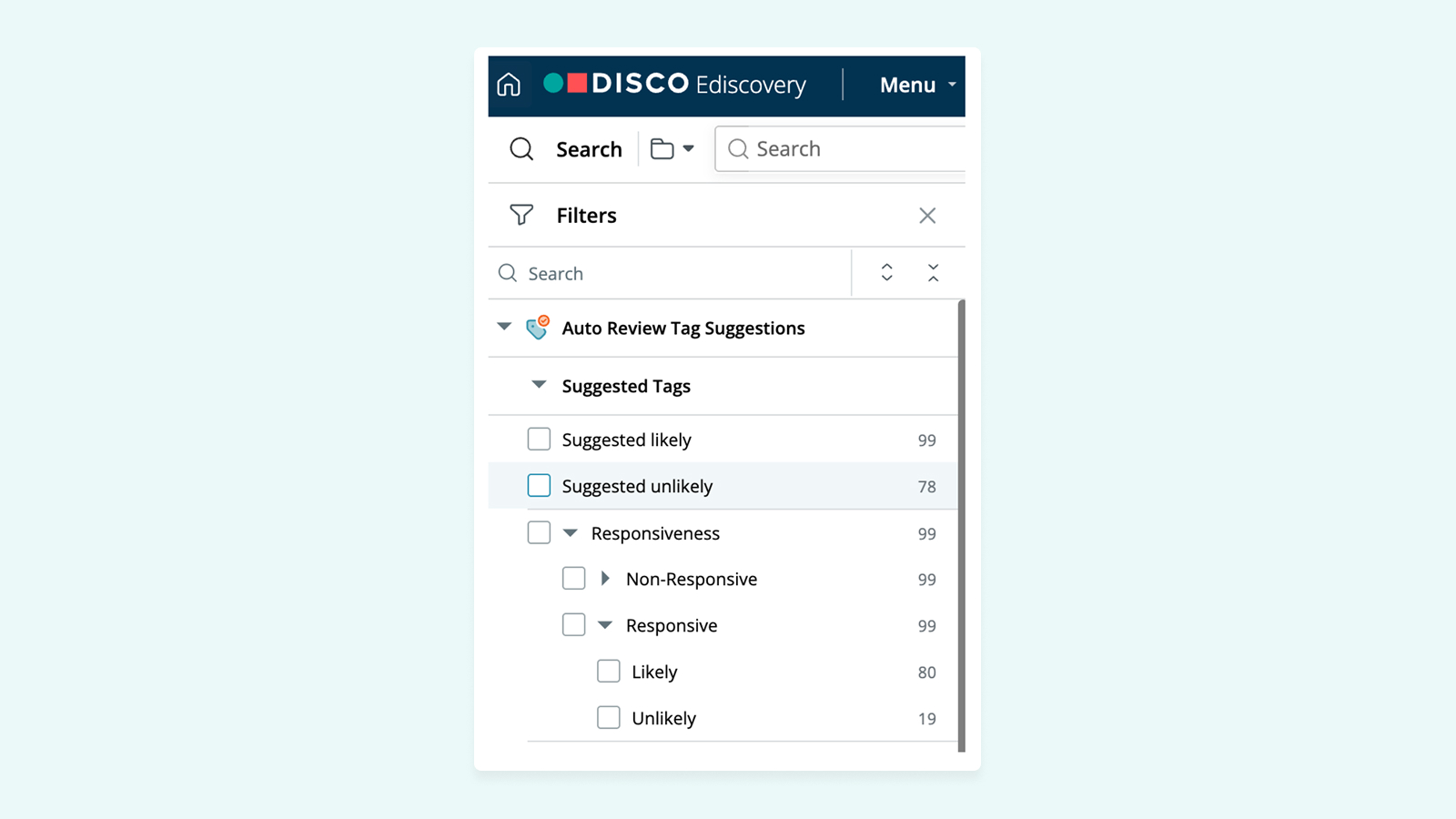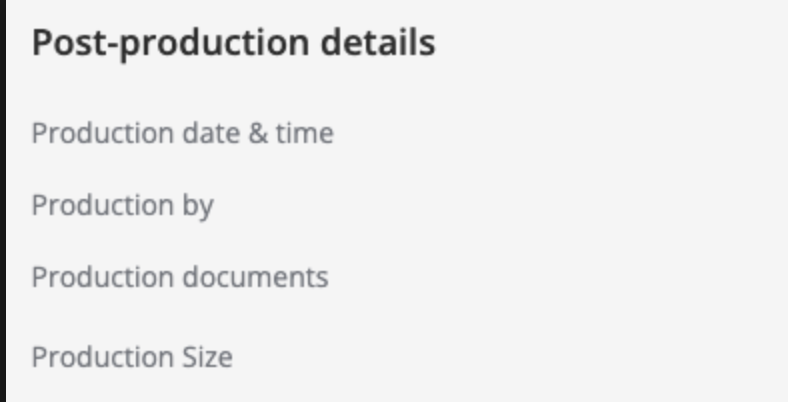⚡️ 1-Minute DISCO Download
Persuasive, comprehensive summaries, outlines, and briefs are the foundation upon which decisions are influenced, arguments are constructed, and cases are won. In this article, you’ll discover the key features and benefits of generative AI for legal documents – plus best practices, use cases, challenges, and actionable next steps.
Why use generative AI for drafting legal documents and briefs?
Generative AI legal document drafting doesn't just assist with discovering the details – it also:
- Provides the invaluable service of streamlining the drafting process while allowing attorneys to quickly adapt their work to different contexts and requirements
- Saves time and effort, making it easier to organize facts and arguments into coherent, persuasive documents
- Reduces the chance of error introduced by the legacy manual process of setting up documents and copying and pasting in sections from prior work
By reducing the time and effort required for drafting, generative AI liberates legal professionals to focus on the more nuanced and strategic aspects of your work, granting them more time to craft persuasive arguments.
In short: AI enables legal professionals to invest expertise where it matters most.
Related: DISCO Introduces Cecilia Deposition Summaries, Powered by Generative AI 🤖
Key features of generative AI for legal document drafting
- Automated drafting
- Customization
- Legal research
- Compliance and risk assessment
- Error reduction
- Collaboration and version control
1. Automated drafting
Generative AI is revolutionizing legal document creation with automated AI legal document drafting, from contracts to briefs and pleadings. It uses natural language processing (NLP), machine learning, and predefined frameworks to streamline workflows and apply proper legal language and formatting.
AI vs. NLP? Read a simple breakdown of the types of AI and how they apply to legal work.
2. Customization
Generative AI can be customized to calibrate the tone and language to the intended audience, whether that’s a judge, client, or opposing counsel. It can also adapt to case requirements, including definitions, parties, terms, rights, and obligations. Jurisdictional nuances – such as region-specific statutes, case law, and regulations – can also be taken into account.
Legal teams can standardize AI outputs by training generative AI to follow predefined templates and style guides based on the firm’s values and the practice areas. Continuous feedback loops help refine results over time, ensuring the AI evolves with the firm's or legal department’s preferences.
3. Legal research
Finding the right case law, fast, can make or break a legal argument. Generative AI speeds up legal research by scanning massive databases for relevant statutes, opinions, and precedents, then summarizing them in plain language.
The AI goes beyond simple keyword matching by analyzing the context of legal queries, surfacing relevant cases, and generating concise summaries that highlight critical arguments. This doesn’t just save time: It helps you be more accurate, stay consistent, and move forward with confidence.
4. Compliance and risk assessment
Generative AI can scan documents for language that introduces legal risk, including inconsistent terms, noncompliant clauses, or jurisdictional red flags. It checks documents against current laws and regulations, surfaces gaps, and cross-references legal precedent to catch potential issues early.
This helps legal teams proactively manage risk, tighten compliance, and adapt quickly to changing regulatory requirements.
5. Error reduction
Generative AI helps eliminate the small but costly mistakes that can slip through manual review. Legal teams can use it to scan drafts for factual inconsistencies, conflicting language, and formatting issues, bringing accuracy and consistency to every version.
The result? Cleaner documents, fewer corrections, and more confidence at the point of delivery.
6. Collaboration and version control
Generative AI makes it easier for legal teams to work together – no matter where they are. Real-time editing, commenting, and review features help teams stay aligned and keep work moving.
Built-in version control tracks every change and makes it easier to revert to earlier drafts when needed. When multiple people edit simultaneously, the AI helps resolve conflicts and ensure everything fits together seamlessly.
Related: Concerned with collaboration and version control in ediscovery? Read this article for strategies and best practices.
Benefits of AI for legal document drafting
- Increased efficiency and quality
- Improved accuracy and consistency
- Better risk management and compliance
- Enhanced legal research
- Reduced costs
Generative AI-powered legal document drafting in action
In this example scenario, Daniela is a litigation associate at a busy law firm handling a substantial caseload. She is assigned to a complex case and is tasked with preparing a comprehensive brief on a tight timeline.
Instead of starting with a blank page, Daniela uses generative AI to create an initial draft, including an outline of key arguments and relevant case law references.
Daniela can now focus her expertise on refining and enhancing the AI-generated drafts to ensure that her arguments are persuasive and legally sound – in short, exercising the reasoning and expertise the firm hired her for in the first place.
This not only accelerates the document creation process for Daniela, but also offers a remarkable boost in quality. Consequently, her clients receive meticulously prepared and persuasive legal documents without a higher bill – which significantly reinforces the business's reputation and client trust.
“Using generative AI in our law firm has dramatically improved our drafting efficiency. AI systems can quickly analyze tons of case-related data, legal precedents, and statutes to create well-structured legal documents. This expedites our processes and enables us to deliver prompt, accurate, and cost-effective services to our clients." – Riva Jeane May Caburog, PR/Media Coordinator at Nadrich and Cohen personal injury law firm
Generative AI for drafting legal documents: Challenges and solutions
Challenge: Loss of creative nuance in document
One potential challenge associated with generative AI-powered document drafting is that it may lack the creative nuance that human lawyers bring to document creation – the subtle rhetorical or persuasive elements that come with human lawyers’ contributions.
Solution: Enable human creativity
It’s crucial for lawyers to recognize that generative AI is an assistant.
View AI as a valuable tool to streamline and improve document creation, with the understanding that the final version requires the expertise and creative input of a human attorney. (Think of it as a young associate assisting a senior colleague.)
The rapidity and efficiency of AI should be balanced with a human’s creative flair and professional experience to create documents that are both legally robust and intellectually compelling.
Challenge: Adapting to rule changes
Legal regulations are subject to frequent updates and amendments, and there may be a lag period for AI systems to understand these changes and adapt templates accordingly.
Solution: Implement regular reviews
Close human oversight is crucial to bridge this gap and address rule changes promptly. Establish a protocol that includes frequent reviews of AI-generated templates and proactive updates to incorporate new legal standards.
Bonus: How to Use Generative AI for Document Review 💡
Adopting generative AI for legal document drafting: Actionable next steps
1. Implement collaborative drafting workflows
To blend AI-generated content with lawyer-driven creative input, set up a quality control system that combines AI efficiency with your lawyers’ expertise.
Assign specific responsibilities and timeframes for each team member. Create clear guidelines for how AI and human expertise interact, and periodically review and refine the collaborative process to ensure ongoing effectiveness and efficiency.
2. Continue standard citation checks
For now, continuing your existing citation-check workflows will be key. While AI can assist with the early stages of drafting, it should never be the final set of eyes.
Uncover the advantages of legal generative AI DISCO
We’ve covered the basics of how to use generative AI for drafting legal documents. While DISCO does not offer a GenAI solution for drafting, our AI-powered software and services brings the same benefits – such as increased speed, productivity, and error reduction – to other parts of the litigation process, from hold and request to discovery and review.
DISCO’s user-friendly ediscovery platform features advanced search options, effortless upload and overlay features, and highly secure protection. And now, DISCO’s Cecilia AI takes litigation to the next level with the following features:
- Cecilia Q&A - your in-platform AI fact expert that can answer any question about your case documents
- Cecilia Timelines - auto-generate legal timelines that summarize key facts
- Cecilia Doc Summaries - ask natural language questions and receive clear, well-written answers
- Auto Review – automate your document review using generative AI
See how we can transform your practice: Request a demo.
Sections of this article come from our downloadable ebook, Generative AI for Litigation: What You Really Need to Know.

Check out the other articles in this series:






%20(1).jpeg)








